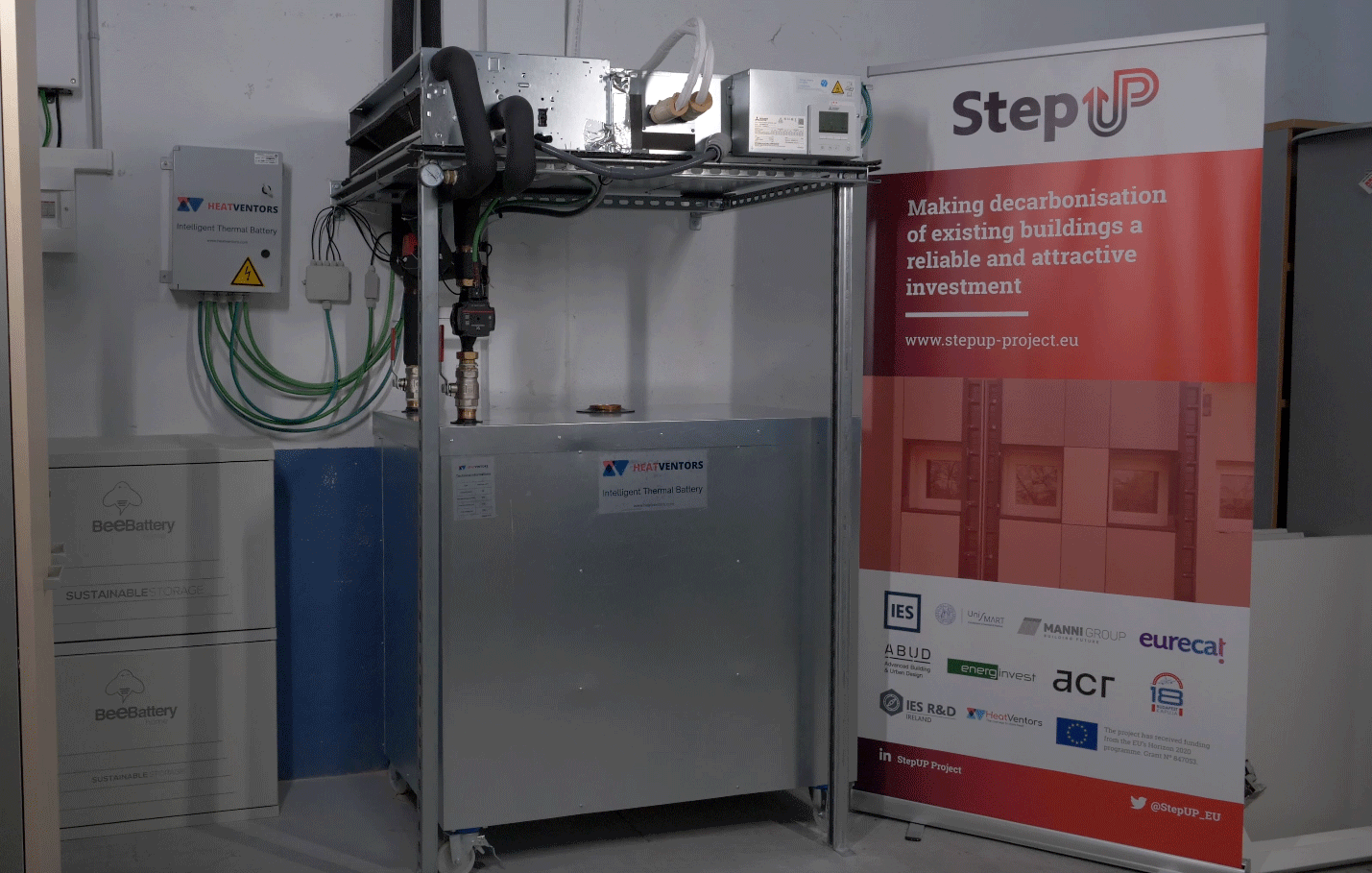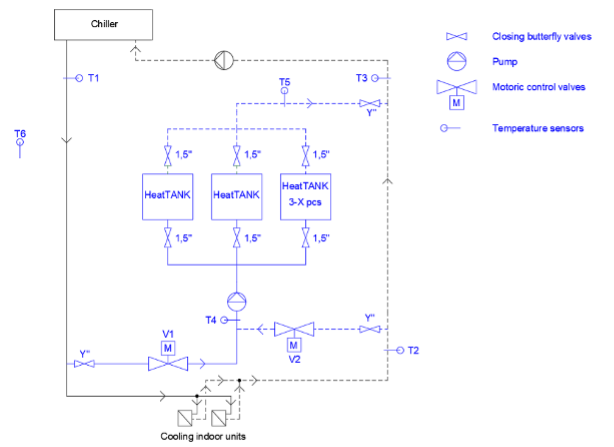
One of the main purposes of the Plug & Play Active System is to offer a cost-effective and time-saving solution for deep renovation compared to existing methods. Additionally, this solution ensures a high level of energy efficiency.
Designed to be implemented in both existing and new buildings, it accelerates the transformation toward decarbonizing the current European building stock. Therefore, the StepUP Plug & Play Active System presented in this chapter demonstrates its interoperability and compatibility with existing HVAC systems in two distinct scenarios.
There are 3 main components of the Plug & Play Active System:
- IES’ data intelligence solutions
- HeatTank Thermal Battery
- 3rd party products (heatpumps, PV system, etc.)
IES’ data intelligence solution
The IES’ data intelligence solutions focused on analysing the monitored data in the building has been integrated to be used with the thermal storage solution.
The key elements of the data intelligence solutions produced by IES include the detailed physics-based IESVE model of the building in consideration, and a building level logic that provides operation recommendations based on the available data from the building as well as the models.
IES provided using its data intelligence tools as a solution that used this detailed physics based-model to run simulations on a daily basis and provide an aggregated heating and cooling demand on a building.
This demand everyday based on the predicted use of the building and the weather file, and adds a valuable layer of insight to the pre-existing intelligence layer of the HeatVentors solutions. This enables an integration that adds value to the logic of when to charge and discharge the HeatTank thermal battery.
HeatTank Thermal Battery
Our solution, HeatTank is a revolution in thermal energy storage systems. Our technology can reduce storage volume by 90%, save at least 20-50% energy with a payback time between 3-5 years.
HeatTank uses special Phase Change Materials (PCM) instead to store the heating or cooling energy in a more concentrated way through melting and solidification.
A general cooling system provides cold heat transfer fluid to the cooling indoor units, where the heat transfer fluid heats up – while cooling the interior, or technology, or etc. – and returns back to the chiller to be cooled down again. Without a storage solution, the chiller needs to provide the continuously changing cooling need to the customer, so the optimization potential is limited. With a storage solution the cooling energy can be generated when the cooling efficiency is higher and the cooling system needs to provide less cooling energy when the efficiency is lower. This results in electricity saving. HeatTank Thermal Battery System can be directly integrated into the liquid circuit of the cooling system.
In the schematic below, the black lines represent the existing system, while the blue lines indicate the bypass where the HeatTank Thermal Battery System connects to the system. The return coolant from the HeatTank always flows into the return line of the cooling system, passing through V1 for charging and V2 for discharging.

Schematics of direct connection
This schematic is recommended for precooling the return line, primarily used for peak performance management. Cooling energy can be produced by a chiller or a free-cooling unit. Motorized valves V1 or V2 are opened, and the pump is started for the charging/discharging process.
Example: The cooling system operates at 7/12°C, and the HeatTank is filled with a phase change material that undergoes a phase change between 8-9.5°C.
Charging of the storage: During the charging of the storage process, the 7°C supply coolant is circulated through the HeatTank via V1, causing the phase change material to freeze and absorb cooling energy. The coolant then returns to the return pipes of the cooling system. The HeatTank acts as a cooling energy consumer (heat sink), prompting the chiller to adapt to the additional consumption by increasing its cooling capacity. Typically, the chiller control system monitors the return temperature and adjusts the cooling capacity accordingly upon detecting an increase in return temperature.
Discharging of the storage: During the discharging process, the 12°C return coolant is circulated through the HeatTank via V2. The phase change material melts as the return temperature decreases to 9-11°C. The chiller control system adjusts to the situation by reducing the cooling capacity of the chiller.
Measured data and signals (charging/discharging) can be shared to enable the central optimization on a building level. The easiest method if databases and data points are shared between the systems.
As demonstrated in the example, the Intelligent Thermal Battery can be seamlessly integrated into various heating and cooling technology systems. By properly timing the charging and discharging cycles, we maximize energy savings.
3rd party products
Heat pumps and PV systems are both key elements of energy-efficient solutions for buildings. Heat pumps use renewable energy to provide heating, cooling, and hot water, while PV systems convert sunlight into electricity. Combining these technologies can enhance energy efficiency and sustainability by utilizing renewable energy sources for both heating and power generation.
Author: HeatVentors & IES
 This project has received funding from the European Union’s Horizon 2020 research and innovation programme under grant agreement no. 847053.
This project has received funding from the European Union’s Horizon 2020 research and innovation programme under grant agreement no. 847053.
This website reflects only the author’s views. The European Climate, Infrastructure and Environment Executive Agency is not responsible for any use that may be made of the information it contains.
